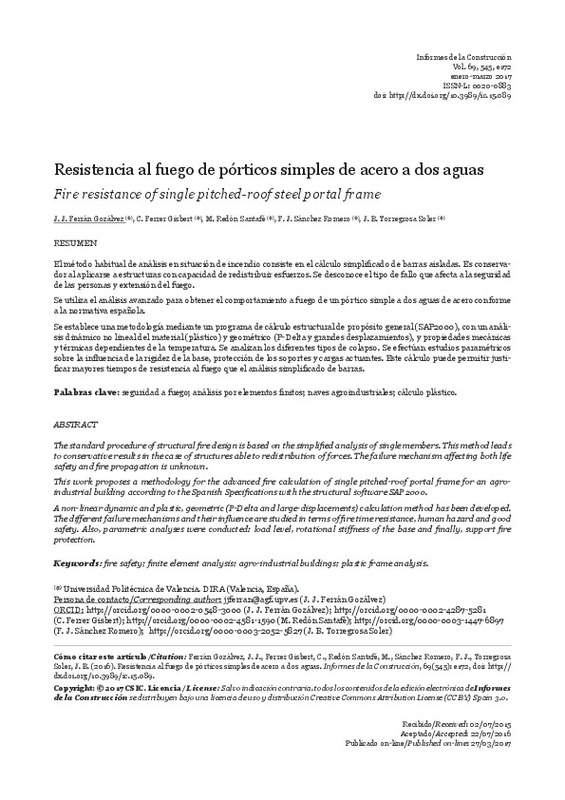JavaScript is disabled for your browser. Some features of this site may not work without it.
Buscar en RiuNet
Listar
Mi cuenta
Estadísticas
Ayuda RiuNet
Admin. UPV
Fire resistance of single pitched-roof steel portal frame
Mostrar el registro completo del ítem
Ferran Gozalvez, JJ.; Ferrer Gisbert, CM.; Redón-Santafé, M.; Sánchez-Romero, F.; Torregrosa Soler, JB. (2017). Fire resistance of single pitched-roof steel portal frame. Informes de la Construcción. 69(545):1-11. doi:10.3989/ic.15.089
Por favor, use este identificador para citar o enlazar este ítem: http://hdl.handle.net/10251/111643
Ficheros en el ítem
Metadatos del ítem
| Título: | Fire resistance of single pitched-roof steel portal frame | |
| Otro titulo: |
|
|
| Autor: | ||
| Entidad UPV: |
|
|
| Fecha difusión: |
|
|
| Resumen: |
[ES] El método habitual de análisis en situación de incendio consiste en el cálculo simplificado de barras aisladas. Es conservador al aplicarse a estructuras con capacidad de redistribuir esfuerzos. Se desconoce el tipo ...[+]
[EN] The standard procedure of structural fire design is based on the simplified analysis of single members. This method leads
to conservative results in the case of structures able to redistribution of forces. The failure ...[+]
|
|
| Palabras clave: |
|
|
| Derechos de uso: | Reconocimiento (by) | |
| Fuente: |
|
|
| DOI: |
|
|
| Editorial: |
|
|
| Versión del editor: | http://doi.org/10.3989/ic.15.089 | |
| Tipo: |
|









